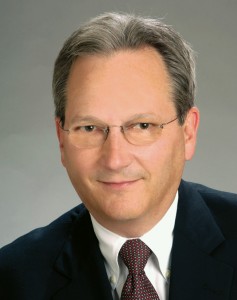By Robert F. Sharpe, Jr.
Note: In the print version of Give & Take, this story is running in two parts. Part one was featured in the May, 2016 issue and part two appears in the June, 2016 issue. The article is available online below in its entirety.
Estate commitments and other planned gifts have taken on an increasingly influential role in campaign funding in recent years. It is not unusual for such gifts to account for 20 to 50 percent of major campaigns that raise upwards of a billion dollars or more and must increasingly be considered and coordinated with other dimensions of a successful campaign. Carefully and strategically integrating gift planning in campaigns can provide valuable alternatives for many donors.
Many of your most loyal supporters, even those who hold significant assets, may answer “yes, but” when asked to contribute to the campaign—not because they do not fully support your mission but because they have important financial considerations that compete with the deepest desire to give. Planned gift vehicles have been created over the centuries to help resolve these conflicts and have recently become key to helping many donors make meaningful gift commitments during a campaign.
Those who are new to the world of major and planned gift fundraising are often surprised to learn that before the early 1990s it was rare, if not unheard of, to give credit in campaigns for charitable remainder trusts, gift annuities and other irrevocable planned gifts, much less revocable bequests and similar commitments. Campaign gift acceptance policies have changed dramatically since that time, particularly in the wake of the Great Recession, but there is by no means a consensus on how to account for planned gifts in campaigns.
For instance, some campaigns are conducted with well-defined goals for gifts completed over a specified time period. In these instances, campaign guidelines typically credit only outright gifts or pledges fulfilled during the period of the campaign.
On the other end of the spectrum, some campaign gift totals include not only outright contributions and pledges made during a campaign, but also all of the deferred gifts completed, bequests received from estates and future bequest commitments made during the campaign. Which way is best?
Understanding the options
Those wishing to understand the process must first accept that we are dealing with one of the most complex areas of nonprofit fund development. There are any number of ways to count bequests and other planned gifts in a campaign, and most would agree there is really no “right” or “wrong” way to do it.
The Council for Advancement and Support of Education (CASE), the Association of Fundraising Professionals (AFP), the Partnership for Philanthropic Planning (PPP), the Internal Revenue Service (IRS), the Financial Accounting Standards Board (FASB) and other groups provide various guidelines concerning how planned gifts should be counted in campaigns. Because they all address the subject from different perspectives, however, there are considerable differences in their approaches.
First things first
It is important to realize at the outset the substantial differences crediting policies can make in the amount reported in a campaign, and for that reason it is prudent to determine gift crediting policies BEFORE setting the goal of a campaign. In today’s environment, instead of taking the “anything they can do we can do better” approach to setting campaign goals, it may be wise to explore what “they” counted to make their goal.
In our experience, competent campaign counsel are well aware of the pros and cons of counting planned gifts toward goals and will consider this issue in depth when conducting a feasibility study and making their recommendations. On the other hand, as we see more institutions conducting campaigns without the benefit of specialized counsel, the role of planned giving is an area that may not receive adequate attention until circumstances demand it—all too often in the later stages of a campaign when the leadership is under heavy pressure to meet goals.
Why bother?
We sometimes hear development executives and volunteer leadership who are about to begin a capital campaign make statements like, “We don’t need to spend much time on planned gift crediting policies because we are only going to count gifts completed during the campaign time frame with no goal for bequests or other planned gifts.”
While many campaign leaders, especially volunteers, might initially agree with this statement, consider how an institution would respond to an 85-year-old former board chair whose net worth exceeds $20 million when his attorney delivers a binding testamentary pledge agreement, along with a copy of a recently revised will, that names your institution to receive $5 million in memory of his wife. The cover letter makes it clear that he expects this to be recognized as a $5 million gift to the campaign.
This situation may be more and more the norm. Over 80 million Americans will pass the age of 70 over the next 20 years; these individuals comprise some 25 percent of the U.S. population and a disproportionately large segment of most campaign prospect pools.
Because of this demographic reality coupled with economic and political uncertainties, the issue of how to credit planned gifts in campaigns, especially those from older individuals, is not going away.
The importance of terminology
The task of determining how planned gifts will be incorporated into a capital campaign can be made more manageable if we begin with definitions of terms.
It is especially helpful to consider the meaning of the term “capital campaign.” In the past, this term was primarily used to describe periodic campaigns designed to raise outright gifts designated for buildings, equipment and other capital needs.
In recent years “campaign” has taken on a variety of different meanings. For example, “comprehensive campaigns” in some cases count dollars received for a variety of purposes that are completed over what may be broad spans of time. The goals of these campaigns have ballooned to amounts that would have astounded fundraisers in the not-too-distant past.
When virtually all gifts from whatever source and all time frames are counted, a “capital campaign” can become in reality an effort to enhance all funding efforts.
The next step, then, is to set goals for annual giving, planned giving and capital giving that feed into the totals of the comprehensive campaign.
The essence of the campaign then becomes an effort to foster an environment that is conducive to better case development, while also providing a sense of camaraderie and urgency that may be lacking during non-campaign periods. The end result can be more gifts of all types and sizes.
Once a comprehensive campaign is “ramped up” and capable of generating more funds from annual commitments, restricted major gifts for capital purposes and estate commitments for endowment and other purposes each year, why would such a campaign ever end?
The only component that might logically come to a definite conclusion would be the campaign component related to large outright commitments restricted to bricks and mortar and other specific capital purposes. While in a period of emphasis on restricted capital gifts, an institution may well have come full circle back to the traditional “capital campaign.”
In fact, some institutions decide never to end their “comprehensive campaign” efforts. They instead perpetuate those efforts in the form of a well-managed, ongoing development program. Long-term goals are periodically updated when a new “campaign” is announced, often at the beginning of the tenure of a new CEO or to commemorate a milestone anniversary.
Shifts in emphasis and institutional funding priorities are then reflected in periodic capital fundraising efforts within the context of the overarching comprehensive campaign. This course of action preserves the benefits of the energy generated from greater focus and compression of effort during a campaign of relatively limited duration, without burning out staff, volunteers and donors with perpetual campaigns.
Where does gift planning fit?
If leadership decides to include a goal for bequests, trusts and other planned gifts as part of an overall campaign, regardless of its scope, here are some ideas to consider:
- Focus on irrevocable gifts that provide useable resources in the shortest period of time. For gifts that last for the life of one or more persons, that might include an emphasis on planned gifts completed by older people among the constituency. The combined life expectancy of a 60-year-old couple is 30 years, so gifts that are expected to be deferred for relatively shorter time periods should normally receive the most emphasis.
- In the case of younger donors, focus on gifts that provide funds in the near term. Examples include charitable lead trusts, charitable remainder trusts for a term of years or trusts funded by younger people for the life of older individuals. Special attention should also be given to younger donors whose assets are held in the form of real property, business interests and other forms that may be illiquid or otherwise require special planning to result in a viable campaign commitment.
- For bequests, set policies that consider the focus of the campaign, the age of the constituency and other factors. Make sure volunteer and staff leadership understand that the majority of charitable bequests are realized from the estates of those who pass away at age 80 or older. Where wealthy individuals are concerned, the time periods may be greater. Recent IRS reports indicate that 84 percent of individuals who die with taxable estates pass away beyond the age of 70, 64 percent die after age 80 and over 25 percent die in their 90s.
- It may not be wise in all cases to encourage bequests of particular amounts as gifts to a campaign. The overwhelming majority of realized bequests typically comes from unrestricted gifts of all or a portion of what is left of an estate after first providing for loved ones. Encouraging bequests of a specific sum in the context of a campaign requires a donor to speculate on the size of their eventual estate. For a number of understandable reasons, many donors will in that case settle on a smaller amount. This reality leads some institutions to focus on larger specific bequests from older, wealthy individuals in the context of a campaign rather than a broader offering of this type of gift.
- At some point in a campaign, it may be wise to consider communicating with the entire constituency in hopes of discovering those who have already left, or would consider leaving, a bequest or other planned gift as part of their long-range planning. The fact that a donor may have already made a bequest commitment, or is considering doing so, says volumes about donative intent regardless of age. Carefully working with these individuals may help cement relationships with viable prospective bequest donors and help form strong bonds with younger people who are not yet at this stage in life. Many younger donors who indicate such strong levels of donative intent may be prospects for significant outright gifts to a campaign and can also be a source of committed and effective volunteers.
- When pursuing the strategy outlined in Point 5, and when scheduling planned gift communications efforts during a capital campaign, it may be advisable to carefully target communications concerning bequests and deferred gifts, and intentionally omit people who are scheduled to be solicited for major outright gifts. This is especially true during the early stages of a campaign. If information is available on websites, for example, be sensitive to ways to discourage younger donors from using interactive features to structure gifts of large amounts that may qualify for significant tax and other financial benefits to them but limit the funds available for charitable purposes for decades.
- When working with elderly donors making large outright commitments to a campaign, it may be advisable to encourage a bequest or other estate gift to back up the pledge in the event the donor should die before completing the gift. In the same vein, wealthier older donors may begin to make increased annual gifts that approximate the spend rate on endowments they may be creating through a bequest intention. [See “Is It Time to Accelerate Bequests” in Give & Take, July 2015.]
- Charitable trusts, bequests and other planned gifts are not normally concluded solely as a result of the efforts of volunteers and advisors. Because bequests and similar expectancies may be legally and/or practically revocable, dedicated staff resources on an ongoing basis during and following the campaign are required to maintain the gift commitment. [See https://www.case.org/Publications_and_Products/2014/September_2014.html.]
Planning is key
As we can see, there are many ways to effectively and productively include planned gifts in a capital campaign. The most important thing is to decide as part of the earliest planning stages whether the campaign is truly an effort in the spirit of an old-fashioned “barn raising” that is designed to quickly solicit funding for specific capital needs, or a more generalized ramping up of all development efforts for a period of time. Planned giving tools can serve both campaign models very well.
In today’s world of rapid social, demographic, economic, cultural and political change, the ability to successfully incorporate more sophisticated gift planning techniques in development efforts before, during and after a period of capital fund emphasis will be one of the keys to unleashing the levels of giving necessary to meet the needs of America’s nonprofits now and in future years.■
 The preceding article is based on content from the popular Sharpe seminar “Integrating Major and Planned Gifts.” Click here for upcoming dates and locations.
The preceding article is based on content from the popular Sharpe seminar “Integrating Major and Planned Gifts.” Click here for upcoming dates and locations.
Robert F. Sharpe, Jr. is Chairman of Sharpe Group.


